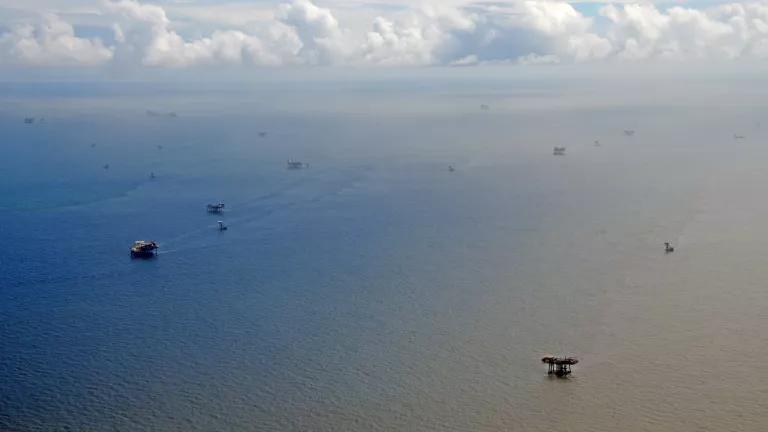A massive open pit strip mine just outside of Bryce Canyon National Park in Utah came one step closer to reality thanks to the Trump Administration.
The Department of Interior ticked off its last major environmental To-Do by issuing the Record of Decision (ROD) for the mine, which sits just off route 89, the two-lane road that connects Bryce with nearby Zion National Park. Both Bryce and Zion are among the most visited national parks in the United States drawing more than seven million visitors annually combined. The ROD, issued right before the Labor Day holiday to avoid attention, is the last step needed before the land can be put up for the lease sale.
NRDC has not yet had a chance to thoroughly review all implications of the Record of Decision, but will do so very carefully over the coming days. The project still needs federal, state and local permits to break ground.
The mine would be an expansion of an existing operation on adjacent state land right beside the picturesque town of Alton. If approved, the 2,114-acre expansion would nearly double the Coal Hollow Mine’s existing footprint, and triple its output. The federal parcel approved for sale in the ROD holds 30 million tons of coal. The move on to federal land became possible when the Trump Administration nixed an Obama-era stop and reset of the deeply flawed federal coal leasing program.
The expansion would move onto lands that are zoned for agricultural use by Kane County, yet the mine’s developers have successfully gotten around that through an exemption (ROD pg. 6).
If the mine expansion becomes a reality, the two-lane road that connects Bryce and Zion National Parks would see a dramatic rise in traffic of huge coal trucks. The road has been recognized by the state as a scenic byway and officially named “The Mormon Pioneer Heritage Highway.”
Trucking is the only available method of transporting coal from the mine. If the lease is approved, the coal truck traffic could increase to 300 double trailer coal truck trips per day, according to the National Park Service.
What’s more, the ROD notes that “the town of Alton is an environmental justice community that will experience disproportionate impacts” (ROD pg. 4). Many residents of this small town are low income and, like so many other economically disadvantaged communities elsewhere, they will bear an undue burden for an ill-advised fossil fuel project.
Bryce Canyon National Park, has the darkest nighttime sky of any place in the lower 48 states. Yet a vast expansion of an open pit mining operation 10 miles away, and round the clock operation may jeopardize that title. The lights from coal mining around Alton will appear significantly brighter than the planet Venus from Cedar Breaks National Monument, about 25 miles away, according the National Park Service.
As one might expect, tourism is a major driver of the local and regional economy. Jobs in the leisure and hospitality sector make up a higher percentage of private employment in Garfield County—which bills itself as “Bryce Canyon County”—than anywhere else in the state. A dramatic increase in truck traffic or other mining activities won’t make a visit to the parks more appealing. As the Superintendent of Bryce Canyon National Park noted in comments on proposed mine expansion: “Bryce Canyon National Park is the main tourist attraction in the county. We believe that activities such as coal extraction could adversely impact the park’s resources and visitors, and potentially diminish tourism in the area.”
If our National Parks are ‘America’s Best Idea,’ then putting a coal mine so close to one of them doesn’t appear to be enlightened thinking.



